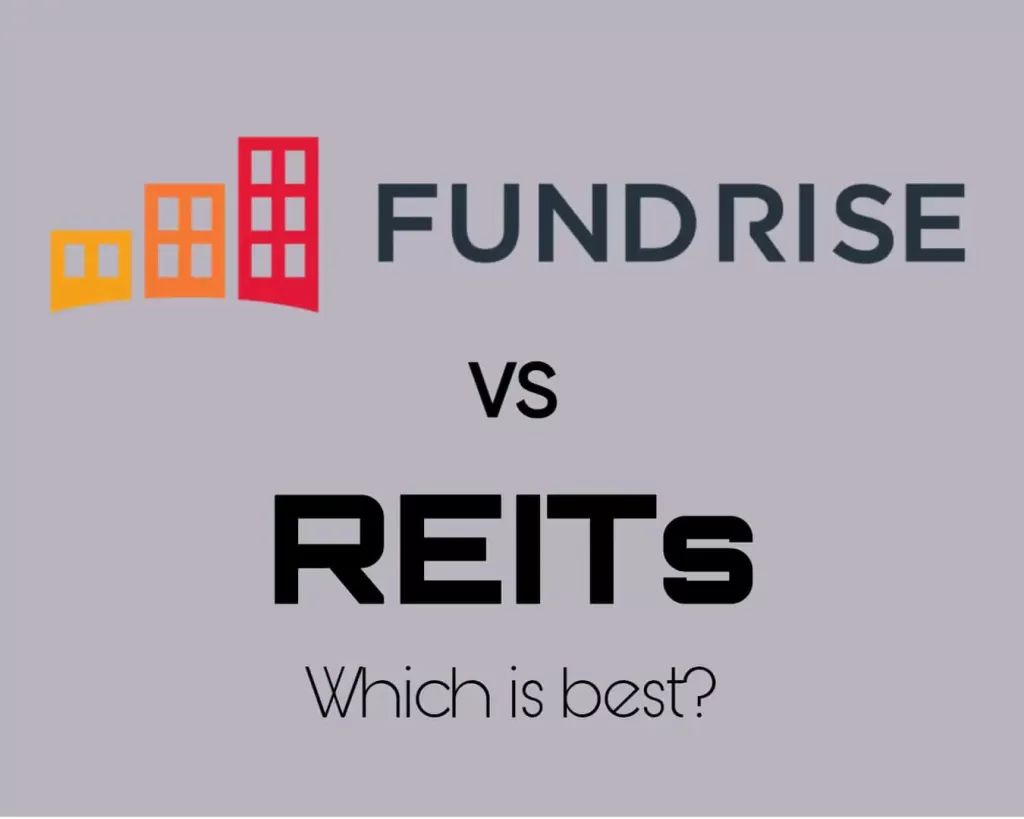Passive income refers to the earnings that are generated with little to no effort on the part of the recipient. In the context of real estate, passive income can be achieved through various investment strategies that allow individuals to earn money without actively managing properties or being involved in day-to-day operations. This article will explore different passive income options in real estate and provide insights into their benefits, risks, and challenges.
One of the key benefits of passive income in real estate is the potential for long-term financial stability. Unlike traditional employment where income is dependent on a regular paycheck, passive income provides a steady stream of cash flow that can supplement or even replace traditional sources of income. Additionally, passive income in real estate offers the opportunity for wealth accumulation and financial freedom. By investing in properties that appreciate over time, individuals can build equity and generate substantial returns on their investments.
There are several passive income options available in real estate. One popular option is rental income, where investors purchase properties and rent them out to tenants. Another option is investing in real estate crowdfunding platforms, which allow individuals to pool their resources with other investors to invest in large-scale real estate projects. Real estate investment trusts (REITs) are another option, where investors can buy shares in publicly traded companies that own and manage income-generating properties. Airbnb and short-term rental income opportunities have also gained popularity in recent years, allowing property owners to rent out their homes or rooms on a short-term basis. Other options include investing in vacation rental properties, real estate notes and mortgage investments, commercial real estate, and tax lien investing.
Table of Contents
Rental income as a passive income solution
Rental income is one of the most common and well-known forms of passive income in real estate. It involves purchasing properties and renting them out to tenants, who pay monthly rent in exchange for the use of the property. There are several advantages to earning rental income as a passive income solution.
Firstly, rental income provides a steady stream of cash flow. As long as the property is occupied by tenants, investors can expect to receive monthly rental payments, which can be used to cover expenses and generate a profit. This consistent cash flow can provide financial stability and help investors build wealth over time.
Secondly, rental income offers the potential for long-term appreciation. Real estate has historically been a reliable investment that appreciates in value over time. By owning rental properties, investors can benefit from both the rental income and the potential increase in property value. This dual income stream can significantly boost overall returns on investment.
To successfully generate passive income through rental properties, it is important to effectively manage the properties and tenants. This includes finding reliable tenants, setting appropriate rental rates, and maintaining the properties in good condition. It is also important to have a contingency plan for vacancies or unexpected expenses.
However, there are also risks and challenges associated with rental income. One of the main challenges is the potential for bad tenants who may cause damage to the property or fail to pay rent on time. This can result in additional expenses and legal issues for the property owner. Additionally, managing rental properties requires time and effort, especially when it comes to finding and screening tenants, handling maintenance requests, and dealing with any issues that may arise.
Investing in real estate crowdfunding platforms
Real estate crowdfunding has emerged as a popular option for individuals looking to invest in real estate without the need for large amounts of capital or direct property ownership. Real estate crowdfunding platforms allow investors to pool their resources with other investors to fund large-scale real estate projects.
One of the main benefits of investing in real estate crowdfunding platforms is the ability to diversify investments across multiple properties and locations. By investing in a portfolio of properties, investors can spread their risk and potentially earn higher returns compared to investing in a single property. Additionally, real estate crowdfunding platforms often provide access to institutional-grade properties that may not be available to individual investors.
Another advantage of real estate crowdfunding is the ability to invest with relatively small amounts of capital. Unlike traditional real estate investments that require a significant upfront investment, crowdfunding platforms allow individuals to invest as little as a few hundred dollars. This makes real estate investing more accessible to a wider range of investors.
However, there are also drawbacks to investing in real estate crowdfunding platforms. One of the main drawbacks is the lack of control and transparency. Unlike direct property ownership, investors have limited control over the management and decision-making process of the properties they invest in. Additionally, there may be limited information available about the properties and the underlying investment structure, making it difficult for investors to fully evaluate the risks and potential returns.
Some popular real estate crowdfunding platforms to consider include Fundrise, RealtyMogul, and PeerStreet. These platforms offer a range of investment opportunities, from residential properties to commercial real estate and even real estate debt investments. It is important to thoroughly research and evaluate each platform before making any investment decisions.
Real estate investment trusts (REITs) as a passive income option
Real estate investment trusts (REITs) are another popular option for earning passive income in real estate. REITs are publicly traded companies that own and manage income-generating properties, such as office buildings, shopping malls, apartments, and hotels. By investing in REITs, individuals can buy shares in these companies and earn a share of the rental income generated by the properties.
One of the main advantages of investing in REITs is the ability to earn passive income without the need for direct property ownership or management. REITs handle all aspects of property management, including finding tenants, collecting rent, and maintaining the properties. This allows investors to benefit from rental income without having to deal with the day-to-day operations.
Another advantage of investing in REITs is the potential for diversification. REITs typically own a portfolio of properties across different sectors and locations, which helps spread the risk and potentially increase returns. Additionally, REITs offer liquidity, as shares can be bought and sold on stock exchanges, providing investors with the ability to easily enter or exit their investments.
However, there are also drawbacks to investing in REITs. One of the main drawbacks is the potential for volatility in share prices. Like any publicly traded company, the value of REIT shares can fluctuate based on market conditions and investor sentiment. This means that investors may experience capital losses if they sell their shares at a lower price than what they paid for them.
Another drawback is the potential for management fees and expenses. REITs often charge management fees and other expenses, which can eat into the overall returns for investors. It is important to carefully review the fees and expenses associated with each REIT before making any investment decisions.
Airbnb and short-term rental income opportunities
In recent years, Airbnb and other short-term rental platforms have gained popularity as a passive income option in real estate. These platforms allow property owners to rent out their homes or rooms on a short-term basis, typically for a few days or weeks at a time. This can be a lucrative opportunity for individuals who have spare rooms or vacation properties that are not being used year-round.
One of the main benefits of short-term rental income is the potential for higher rental rates compared to long-term rentals. Short-term rentals often command higher nightly rates, especially in popular tourist destinations or during peak travel seasons. This can result in higher overall rental income compared to traditional long-term rentals.
Another advantage of short-term rental income is the flexibility it offers to property owners. Unlike long-term rentals where tenants typically sign leases for several months or years, short-term rentals allow property owners to have more control over when and how their properties are rented. This flexibility can be particularly beneficial for individuals who want to use their properties for personal use or have the option to rent them out on a part-time basis.
However, there are also drawbacks to short-term rental income. One of the main challenges is the need for active management and marketing. Unlike long-term rentals where tenants typically stay for extended periods of time, short-term rentals require constant turnover and maintenance. Property owners need to be prepared to handle check-ins, cleanings, and any issues that may arise during guests’ stays.
Another challenge is the potential for regulatory issues and legal restrictions. Short-term rentals are subject to local laws and regulations, which can vary significantly from one jurisdiction to another. Property owners need to ensure that they are in compliance with all applicable laws and obtain any necessary permits or licenses before renting out their properties on a short-term basis.
To successfully generate passive income through short-term rentals, it is important to provide a high-quality experience for guests. This includes ensuring that the property is clean and well-maintained, providing amenities and services that meet guests’ expectations, and being responsive to any inquiries or issues that may arise during their stay.
Investing in vacation rental properties for passive income
Investing in vacation rental properties is another option for earning passive income in real estate. Vacation rental properties are typically located in popular tourist destinations and are rented out on a short-term basis to vacationers and travelers. This can be a lucrative opportunity for individuals who want to own a property in a desirable location and generate rental income when they are not using it.
One of the main advantages of investing in vacation rental properties is the potential for high rental rates during peak travel seasons. Vacationers are often willing to pay a premium for accommodations in popular tourist destinations, especially during holidays or special events. This can result in higher overall rental income compared to traditional long-term rentals.
Another advantage of vacation rental properties is the ability to use the property for personal vacations or getaways. Unlike other forms of passive income in real estate, vacation rental properties offer the opportunity for property owners to enjoy their investment when they are not renting it out. This can provide a unique combination of income generation and personal use.
However, there are also factors to consider when investing in vacation rental properties. One of the main factors is the seasonality of rental income. Vacation rental properties often experience fluctuations in occupancy rates and rental rates based on the time of year and demand from travelers. Property owners need to carefully evaluate the potential rental income during different seasons and factor in any potential periods of low occupancy.
Another factor to consider is the need for active management and marketing. Vacation rental properties require constant turnover and maintenance, as guests typically stay for short periods of time. Property owners need to be prepared to handle check-ins, cleanings, and any issues that may arise during guests’ stays. Additionally, effective marketing is essential to attract potential guests and ensure a steady stream of bookings.
There are also risks and challenges associated with vacation rental properties. One of the main risks is the potential for unexpected expenses, such as repairs or maintenance issues that may arise when guests are staying at the property. Property owners need to have a contingency plan and set aside funds for any unforeseen expenses.
Another challenge is the potential for regulatory issues and legal restrictions. Vacation rental properties are subject to local laws and regulations, which can vary significantly from one jurisdiction to another. Property owners need to ensure that they are in compliance with all applicable laws and obtain any necessary permits or licenses before renting out their properties on a short-term basis.
Real estate notes and mortgage investments
Real estate notes and mortgage investments are another option for earning passive income in real estate. This involves investing in loans secured by real estate, such as mortgages or promissory notes. Investors earn passive income through interest payments made by borrowers.
One of the main benefits of investing in real estate notes and mortgage investments is the potential for consistent cash flow. As long as borrowers make their monthly interest payments, investors can expect to receive a steady stream of income. This can provide financial stability and help investors build wealth over time.
Another advantage is the potential for higher returns compared to other passive income options in real estate. Real estate notes and mortgage investments often offer higher interest rates compared to traditional savings accounts or bonds. This can result in higher overall returns for investors.
However, there are also drawbacks to investing in real estate notes and mortgage investments. One of the main drawbacks is the potential for default by borrowers. If borrowers fail to make their interest payments or default on their loans, investors may experience a loss of income or even a loss of principal. It is important to carefully evaluate the creditworthiness of borrowers and assess the risk associated with each investment.
Another drawback is the lack of liquidity. Unlike publicly traded investments such as stocks or REITs, real estate notes and mortgage investments are not easily bought or sold on an exchange. This means that investors may have limited options for exiting their investments if they need to access their capital.
To successfully generate passive income through real estate notes and mortgage investments, it is important to thoroughly research and evaluate each investment opportunity. This includes assessing the creditworthiness of borrowers, reviewing the terms and conditions of the loan or note, and conducting due diligence on the underlying property.
Investing in commercial real estate for passive income
Investing in commercial real estate is another option for earning passive income. Commercial real estate refers to properties that are used for business purposes, such as office buildings, retail spaces, industrial warehouses, and hotels. By investing in commercial properties, individuals can earn rental income from businesses that lease space in these properties.
One of the main benefits of investing in commercial real estate is the potential for higher rental rates compared to residential properties. Commercial tenants often sign long-term leases and are willing to pay higher rents for prime locations and well-maintained properties. This can result in higher overall rental income compared to residential properties.
Another advantage is the potential for long-term appreciation. Commercial real estate has historically been a reliable investment that appreciates in value over time. By owning commercial properties, investors can benefit from both the rental income and the potential increase in property value. This dual income stream can significantly boost overall returns on investment.
However, there are also drawbacks to investing in commercial real estate. One of the main drawbacks is the potential for higher upfront costs compared to residential properties. Commercial properties often require larger investments and may have higher operating expenses, such as property taxes, insurance, and maintenance costs. It is important to carefully evaluate the financial feasibility of each investment opportunity and assess the potential returns.
Another drawback is the potential for longer vacancy periods compared to residential properties. Commercial tenants often have specific requirements and may take longer to find and lease space compared to residential tenants. This means that investors may experience longer periods of vacancy between tenants, which can impact overall rental income.
To successfully generate passive income through commercial real estate, it is important to thoroughly research and evaluate each investment opportunity. This includes assessing the location, demand, and potential rental income of the property, as well as conducting due diligence on the financial stability of potential tenants.
Tax lien investing as a passive income strategy in real estate
Tax lien investing is another passive income strategy in real estate that involves purchasing tax liens on properties with delinquent taxes. When property owners fail to pay their taxes, the government places a lien on the property, which can then be sold to investors. As an investor, you can purchase these tax liens at auction and earn interest on the amount owed by the property owner. This interest rate can be quite high, making tax lien investing an attractive passive income strategy. Additionally, if the property owner fails to pay off the lien within a specified time period, you may have the opportunity to foreclose on the property and take ownership. This can provide even greater potential for profit. Overall, tax lien investing offers a relatively low-risk way to generate passive income in real estate, as it is backed by the government and provides a predictable return on investment.
If you’re interested in exploring passive income solutions in real estate, you may find this article on passiveincomesolutions.org helpful. Titled “Hello World,” it provides an introduction to the concept of passive income and offers insights into various strategies for generating passive income in the real estate industry. Whether you’re considering rental properties, real estate investment trusts (REITs), or other avenues, this article can serve as a valuable starting point. Check it out here. Additionally, for more specific information on real estate passive income solutions, you can also refer to this article on the same website: https://passiveincomesolutions.org/.
FAQs
What is passive income in real estate?
Passive income in real estate refers to the income generated from rental properties, real estate investment trusts (REITs), and other real estate investments that require minimal effort or involvement from the investor.
What are some passive income solutions in real estate?
Some passive income solutions in real estate include rental properties, REITs, real estate crowdfunding, and real estate partnerships.
What is a rental property?
A rental property is a real estate investment that is purchased with the intention of generating rental income. The investor purchases the property and rents it out to tenants, who pay rent on a monthly basis.
What is a REIT?
A REIT, or real estate investment trust, is a company that owns and operates income-generating real estate properties. Investors can buy shares in a REIT and receive a portion of the income generated by the properties owned by the trust.
What is real estate crowdfunding?
Real estate crowdfunding is a way for investors to pool their money together to invest in real estate projects. The investors typically invest through an online platform and receive a portion of the income generated by the project.
What is a real estate partnership?
A real estate partnership is a business arrangement in which two or more individuals or entities come together to invest in a real estate project. The partners share the profits and losses of the investment.







